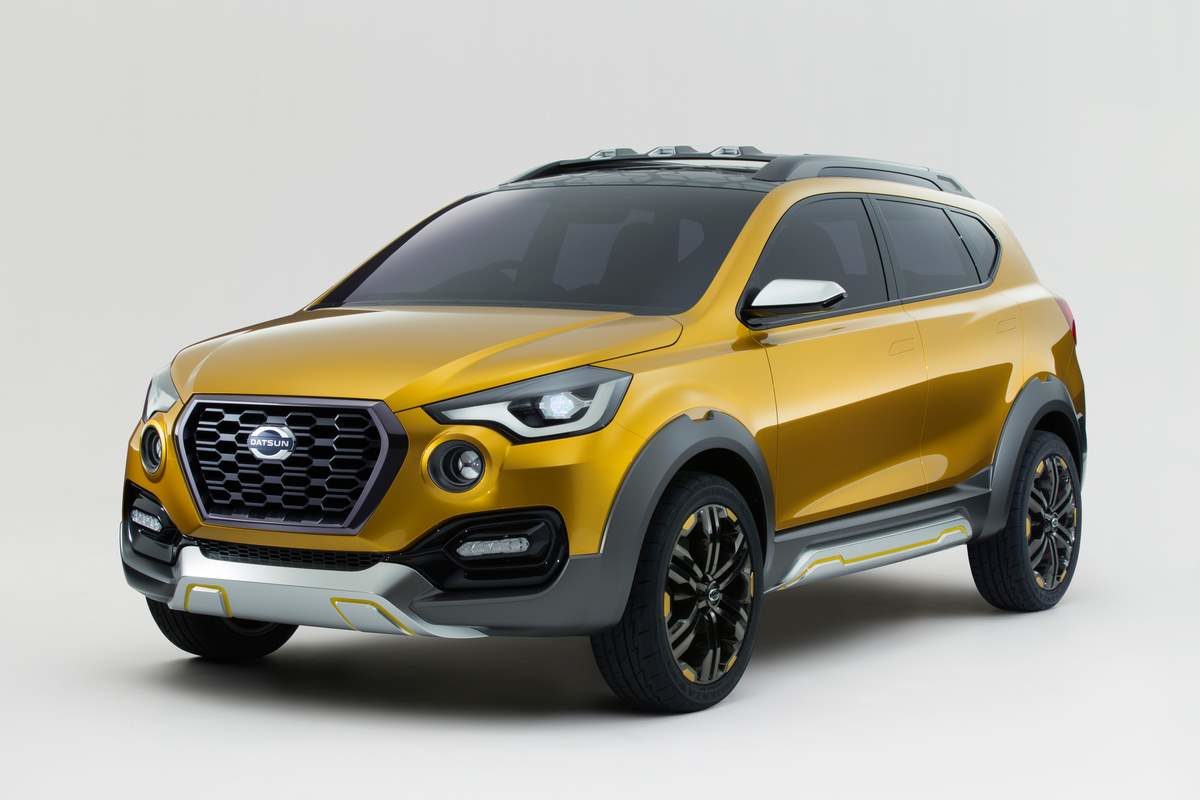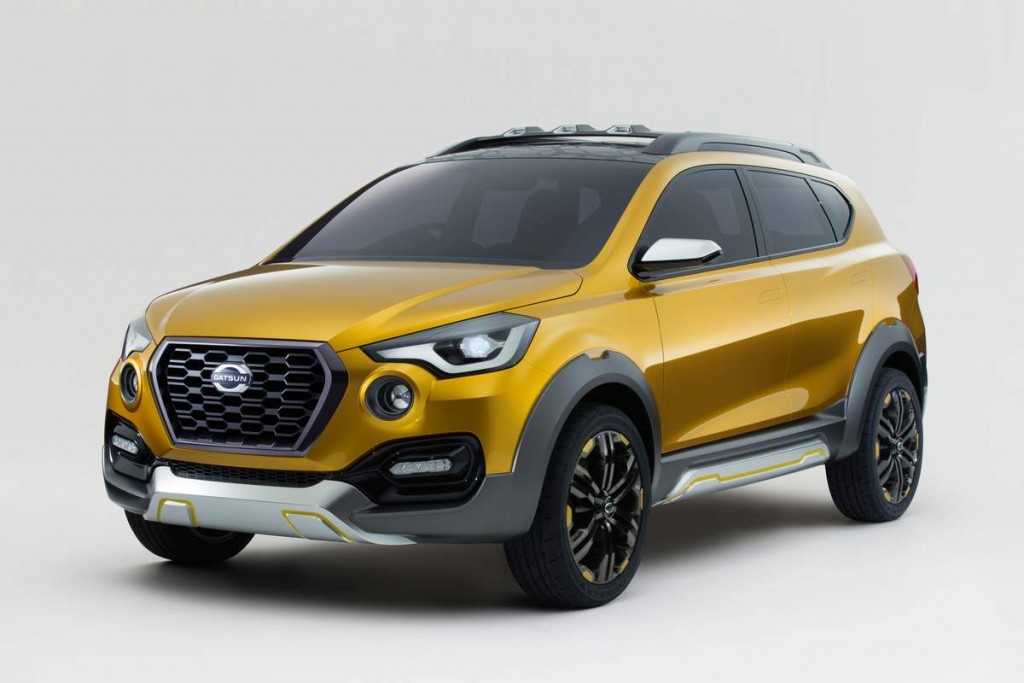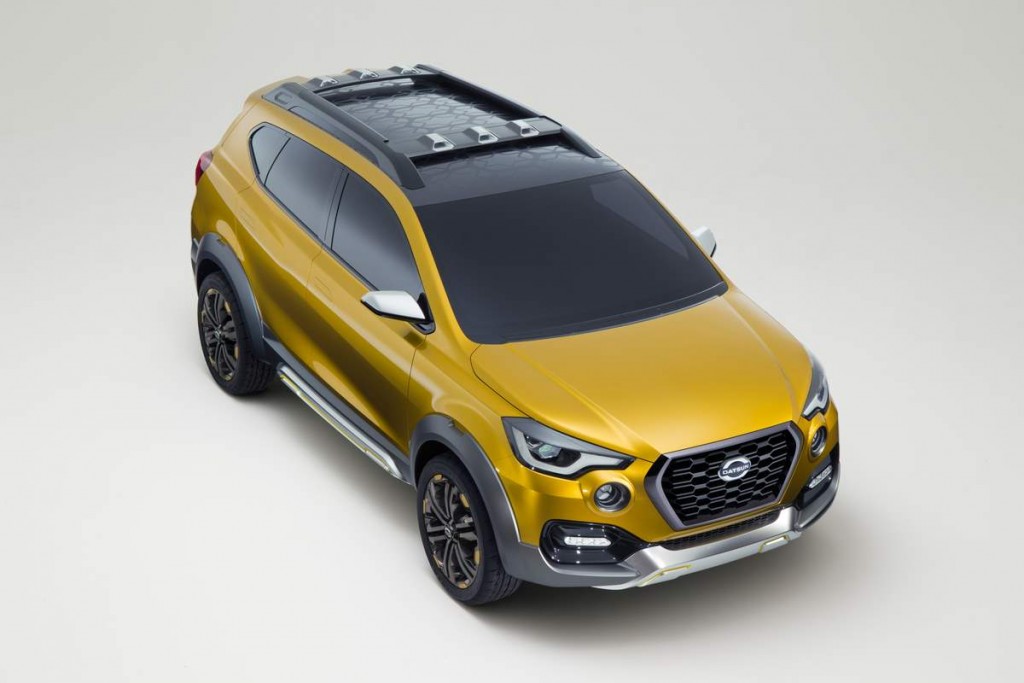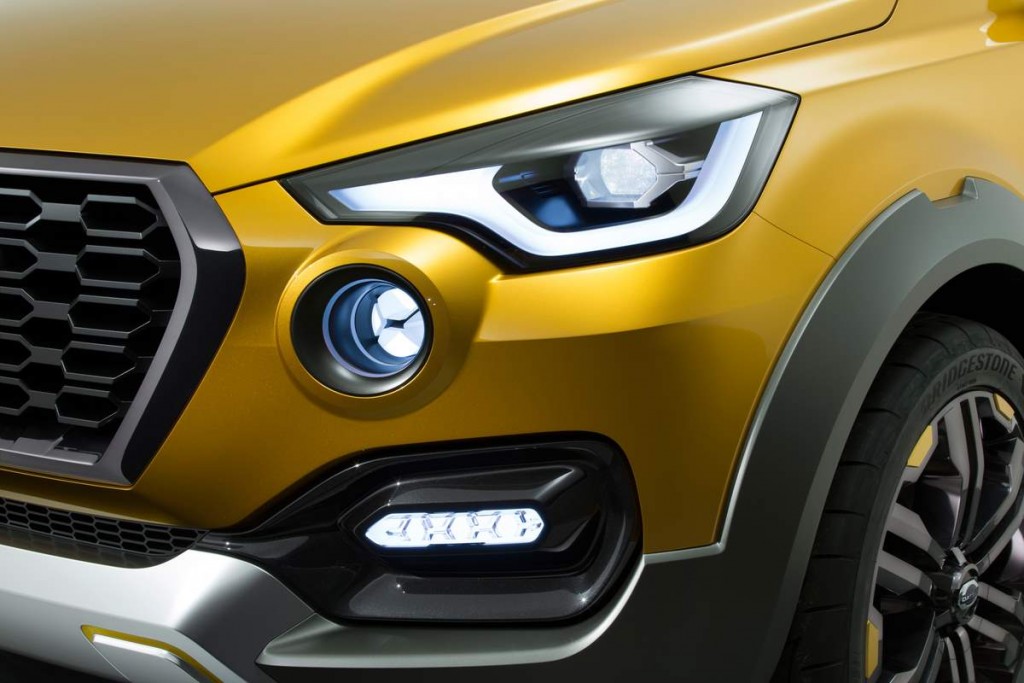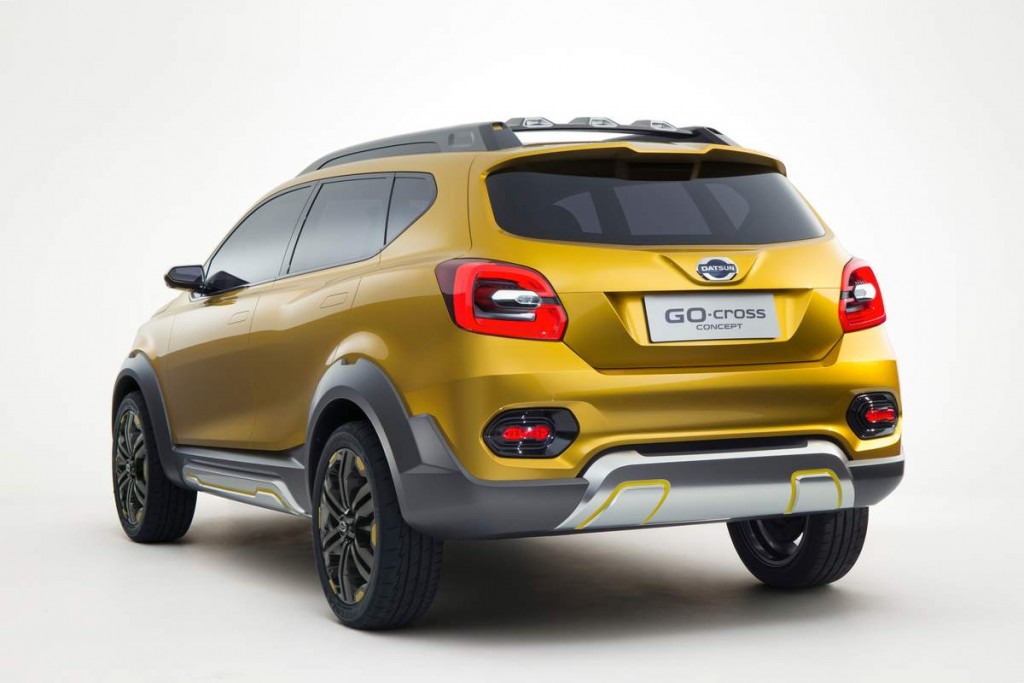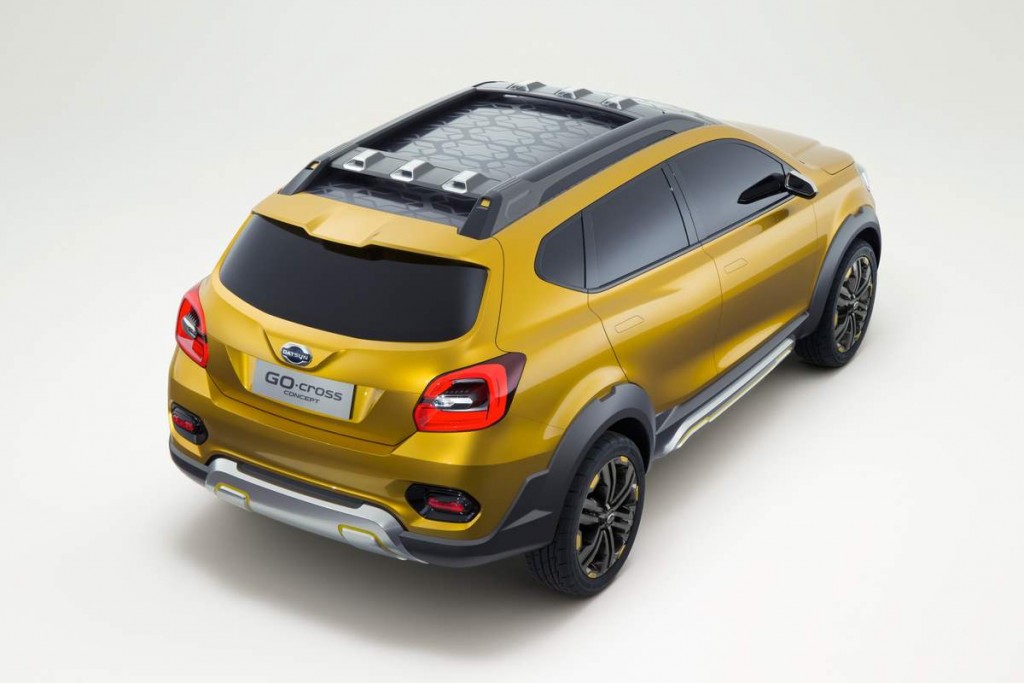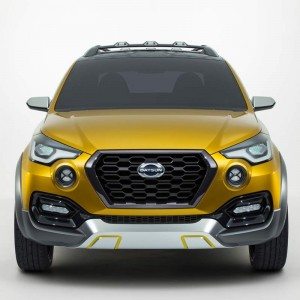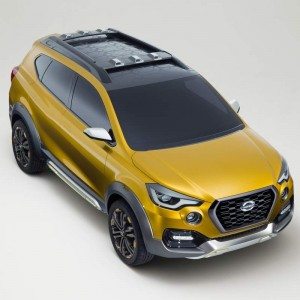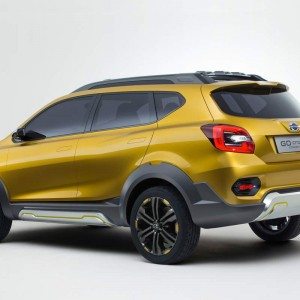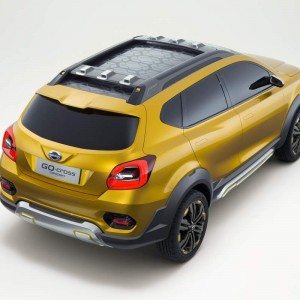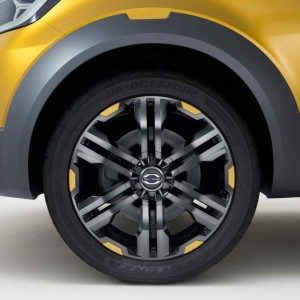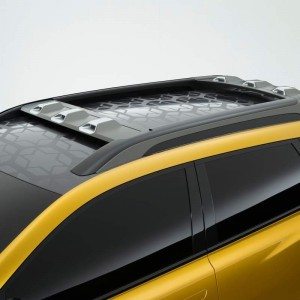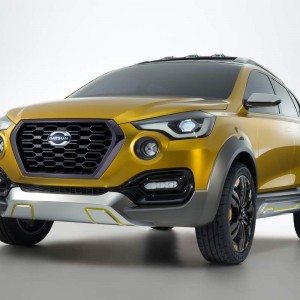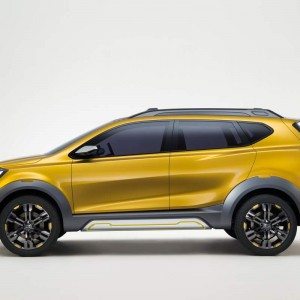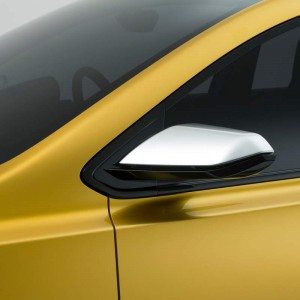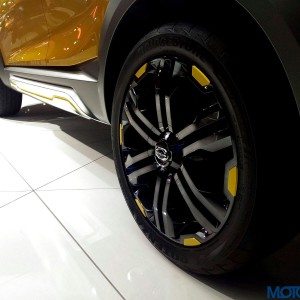First showcased at the 2015 Tokyo Motor Show, and later at the 2016 Auto Expo in India, the Go-Cross concept previews Datsun’s first crack at the burgeoning compact budget SUV segment in India. The Go-Cross will be positioned above the Go+, while rivaling the likes of the Mahindra KUV100 and the lower variant of the Maruti Suzuki Vitara Brezza. To be based on the Renault-Nissan Alliance’s CMF-A platform that also underpins the Renault Kwid and the Datsun redi-Go, the Go Cross is expected to be launched in India sometime in mid-2017. Here are four reasons why the KUV100 and the Vitara Brezza should be a little scared.
Those looks
Admittedly, this is the best looking vehicle that the NEW Datsun grille has ever been on. Fear not, nothing with a crossover in its description comes close to rivaling the beauty of a 240Z. Sigh. Anyways, there’s no denying the fact that the Go Cross concept looks great. Even though it’s a concept, you can sense that it will look good even when the drab, production friendly bits go in place. Though visual references to the Go+ cannot be ignored, the Go Cross rubs them off with generous dabs of body cladding, a few skid plates and a couple of roof rails. But the Go Cross’s look is less about the details (which will be watered down for production anyway), and more about the stance and proportions, which are more or less perfect for the type of vehicle that the Go Cross wants to be. We’re sure that after being prepped for production, the Go Cross’s appearance will give the KUV100 cold feet, whose looks haven’t exactly caught the Indian budget SUV buyers’ fancy.
Interiors, equipment and seven seats
Though the interiors haven’t been revealed yet, the Go Cross will feature completely different interiors than the rest of the Go clan. This is a good thing, because the other two have interiors that are as bare as the Martian surface. The Go Cross’s cabin will be more up market than the both the Go and Go+, with features like a touch-screen equipped infotainment system. On paper, it’ll also have space for seven occupants, while its arch rivals offer only space for five. But as we’ve learnt from the Go+’s insides, the third row could be strictly for kids or luggage. As for safety, expect the Go Cross to feature ABS and dual airbags to be standard across the range.
New engine
It isn’t clear what engine options will be offered in the Go Cross, but the familiar 1.2-litre petrol engine from the Go and Go+ seems to be the favorite contender. In the Go series, it makes 68PS of power at 5,000 rpm and generates 104Nm of torque at 4,000rpm. Given that the two cars are lighter than your average hatchback, the said engine accounts for some sprightly performance. However, in case of the heavier Go Cross, the same engine could come in a different (read powerful) state of tune. As for a diesel engine, Vincent Cobee, global head, Datsun, mentioned at the 2016 Auto Expo that the Go-Cross might not sip the dirty fuel, and get a newly developed petrol engine instead, which will be offered alongside the 1.2-litre mill. We’ll have to wait till the first details of the Go Cross come along in a few months time.
Aggressive pricing
When it comes to pricing, Datsun will do what it does best – price the Go Cross aggressively. Our guess is that it’ll be priced between INR 5-7 lakhs (ex-showroom), bang in the middle of KUV100 territory. Also, Datsun reckons that the Go Cross’s length can be trimmed to take it to sub-4 meter land, the tax haven for Indian automobile manufacturers. This means that the Go Cross can be even more aggressively priced, especially with the 1.2-litre petrol engine. Starting next year, the Go Cross is expected to be manufactured at the Renault-Nissan plant at Oragadam near Chennai. The Go-Cross might actually help achieve the plant’s full production capacity of 4.8 lakh units annually, including exports.

